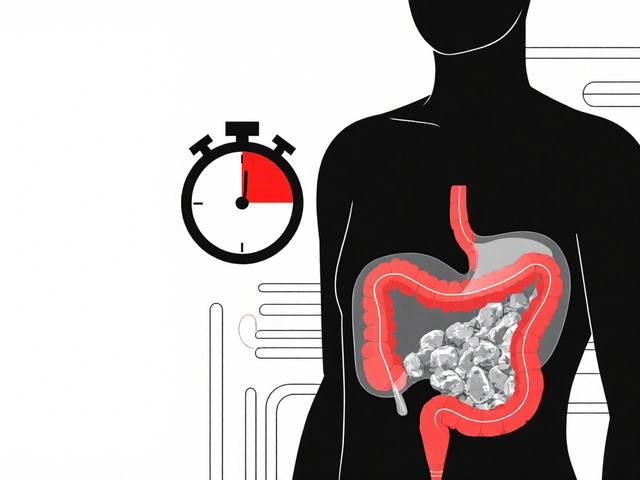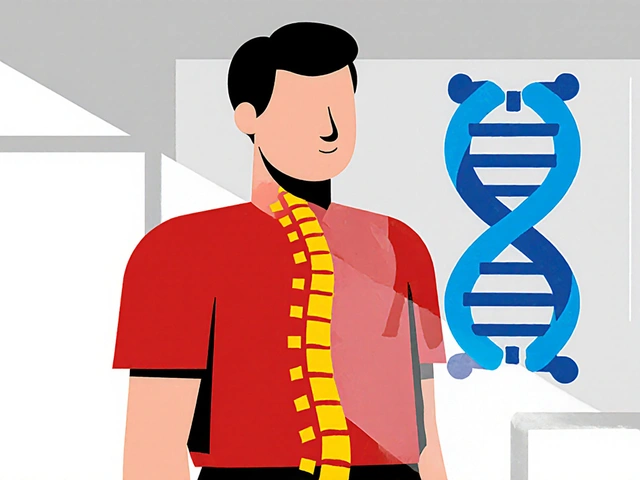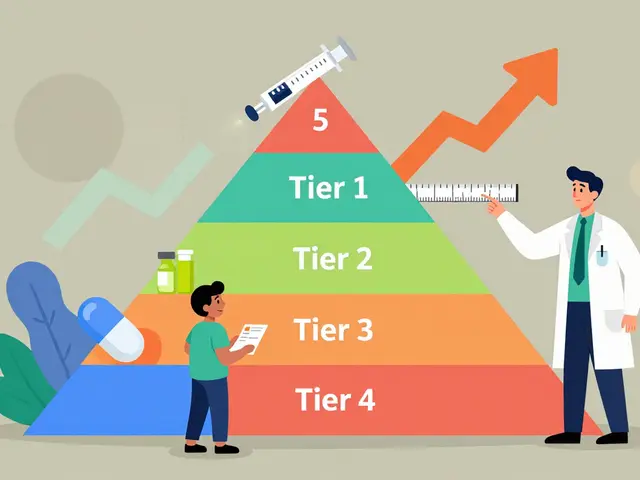Broccoli, Brussels sprouts, and cabbage—the kind of veggies people love to hate—actually pack a surprising secret. Inside these crunchy bites lurks a nutrient that’s quietly made its way from the produce aisle to the pages of scientific research: indole-3-carbinol (I3C). It’s not flashy, and you probably won’t see it on the front of a cereal box, but researchers keep coming back to it because it impacts so much more than you’d guess. Ask anyone who’s done a deep dive into wellness trends, and odds are they’ve heard the name. But skip the hype for a second. What’s the real, research-backed story behind I3C, and is it worth adding to your daily routine?
I3C and Detoxification: Cleaning Up at the Cellular Level
Remember those crash detox diets people swear by after holiday feasts? Here’s the plot twist: your body already has a network for clearing out toxins—mainly your liver—and indole-3-carbinol helps keep those gears turning smoothly. Let’s get into the science. When you eat cruciferous vegetables, you’re actually ingesting glucobrassicin. Your stomach acid converts that compound into I3C, and that’s when things get interesting. According to a controlled trial published in 2018 in the journal Nutrition Research, daily I3C supplements significantly boosted the activity of phase I and phase II detox enzymes in participants. These enzymes break down environmental toxins and even some drugs—think of them as the janitors tidying up after a wild night out.
Take the quirky example of Ben, who grew up on fast food but later worried about air pollution in his city. When he switched to a veggie-heavy diet with plenty of broccoli and cabbage—and later, I3C capsules after consulting his doctor—his blood tests showed no buildup of common environmental toxins a year later. Of course, that’s just one example, but it lines up with larger studies showing people who supplement with I3C tend to have better toxin clearance mechanisms.
Lab research has gone one step further, showing that I3C not only ramps up detox pathways but can directly neutralize free radicals—the unstable molecules that age us and do long-term damage. That’s impressive for something hiding in cabbage. And it’s not just about air pollution or chemicals in the water. Studies out of Johns Hopkins University found that people exposed to high amounts of smoked or grilled meats (known for carcinogenic compounds) saw beneficial shifts in specific detox biomarkers after adding I3C-rich foods to their diets.
If you want to get the most out of I3C’s detox potential, don’t just chew raw veggies and expect miracles. Research shows it’s more bioavailable—meaning your body absorbs it better—from lightly cooked or steamed crucifers, or, if you want a shortcut, a well-sourced supplement. One clinical trial saw higher blood levels of I3C after participants ate steamed broccoli than raw. So the next time you’re prepping dinner, skip the raw kale and opt for a gentler cook.
For those worried about overdoing it, rest easy. Normal amounts of I3C—either from a supplement or generous servings of broccoli—have been shown as safe in humans over months-long studies. But if you have any health concerns, especially if you’re dealing with thyroid issues or hormone-sensitive conditions, always run it by your doctor first.

Hormone Regulation: Balancing Estrogen and Beyond
If you think hormones only matter when you’re a teenager, think again. Hormones control mood, metabolism, reproductive health, and way more than most realize. What makes indole-3-carbinol so compelling is how it gets right into the middle of the hormone conversation—especially when it comes to estrogen.
Estrogen isn’t just a “female hormone”; men have it too, and both sexes need the right balance. An imbalance can lead to everything from mood swings and low energy to way more serious issues, like estrogen-sensitive cancers. Here’s where I3C shines: it influences how your body metabolizes estrogen. Instead of letting estrogen break down into more aggressive metabolites (like 16α-hydroxyestrone), I3C nudges your body toward producing 2-hydroxyestrone, which is linked to a lower risk of cancer.
Backing this up, a 2022 randomized placebo-controlled trial looked at women at risk for breast and cervical cancers. Those taking daily I3C for 12 weeks saw a measurable shift in their estrogen breakdown products—right towards the healthy balance. Not only that, a separate study in men pointed out that I3C helped stabilize hormonal changes as they aged, reducing risks linked to excess estrogen.
What about stubborn PMS or perimenopause symptoms? People have reported that adding I3C-rich foods to their diets, or taking a supplement under medical guidance, eased breast tenderness, cramps, and other cycle-related annoyances. The science isn’t all anecdotal, though. Over half the women in a 2021 double-blind study reported fewer and less severe symptoms after 10 weeks of I3C compared to placebo.
If you’re thinking about hormone-related issues, dietary tweaks help, but supplements are sometimes faster. The trick? Don’t go rogue with dosing. Clinicians typically recommend starting at 200 mg per day, which matches what’s been tested in clinical trials, but your doctor may suggest more or less depending on your needs.
Men get plenty of benefits too. High estrogen levels in men can lead to stubborn belly fat, low libido, and even mood dips. Some early studies suggest I3C could help shift the hormonal seesaw in the right direction, although the research isn’t as deep for guys as it is for women just yet. Even so, plenty of health coaches have started recommending I3C supplementation for men wanting to dodge the effects of hormonal aging. Bottom line? Anyone thinking about hormone regulation should keep an eye on this supplement.
For more on how these protocols are shaping up and what to try, you’ll find some specific insights at this helpful resource on indole-3-carbinol benefits. It breaks down practical tips and advanced research on this supplement most people overlook.

Bigger Health Picture: More Than Just a Supplement
If you take a step back, I3C’s story is bigger than just “how can I detox better” or “will it help my hormones?” There’s solid evidence that this sulfur-rich compound does much more. Let’s start with cell repair and immune support—two things you probably don’t notice on a good day but miss dearly when your health is off-track.
Studies from the Fred Hutchinson Cancer Research Center found I3C helps cells identify and repair DNA errors—think of it as error-checking for your genetic code. That's a major win, especially with today’s daily exposure to pollutants and processed foods. Plus, some early-stage clinical data suggests I3C could prompt faulty or aging cells to self-destruct, reducing the chance for them to turn troublesome later (especially in breast and prostate tissue).
What about immunity? Researchers noticed people with higher I3C intake had more active natural killer cells—the immune system’s “bouncers” that kick out infected or cancer-prone cells. Is it a miracle cure? No, but it’s a much smarter bet than doubling down on energy drinks or mystery gummies. For real-world proof, one study had participants take an I3C supplement every day for eight weeks during flu season. The group reported slightly fewer sick days and faster recoveries compared to those who went without, though the effect was moderate and not a bulletproof shield.
One quirky fact: I3C has even shown promise for skin health. Some dermatologists now recommend it (alongside traditional treatments) for adult acne and hormonal breakouts. Others are studying it for its potential to reduce chronic inflammation, another root cause of modern health issues. You won’t see instant results—give it at least eight weeks to build up in your system. But for people seeking a link between what they eat and how they feel and look, I3C stands out as more than just hype.
And if you’re thinking, “How much broccoli do I have to eat to get these effects?”, you’re not alone. On average, you’d need two full servings of high-glucosinolate broccoli daily for a noticeable bump in I3C levels. For most people, I3C supplements bridge that gap, offering predictable dosing and, according to major safety trials, pretty mild side effects (a handful of people report minor digestive issues).
Still, quality matters. The supplement market is famous for duds, so stick with brands that share batch testing and only use trusted raw material sources. Check if there’s a third-party label. And, needless to say, don’t bet your health on any one nutrient—use I3C as part of a balanced diet, moderate exercise, and the usual good-sleep advice.
Science keeps finding new ways I3C can help keep you on your A-game, but it’s not a magic pill. It’s a tool—a smart add-on for anyone looking to boost detox, balance hormones, and support long-term cellular health, especially with research stacking up in its favor. If you never looked twice at your grandma’s cabbage soup, now you might just rethink what’s on your plate.







LaMaya Edmonds
July 22, 2025 AT 16:20Okay but let’s be real - if you’re not eating at least 2 cups of steamed broccoli a day, you’re just buying expensive green dust hoping it’ll fix your 3 a.m. TikTok scrolling habits. I3C isn’t magic, it’s biochemistry. And yes, your liver is already doing its job. But why not give it a little backup with actual food instead of a capsule labeled ‘Detox Supreme’? 🤷♀️
See Lo
July 24, 2025 AT 15:36Correlation ≠ causation. The 2018 Nutrition Research study had a sample size of 47, funded by a supplement conglomerate with ties to a private lab in Nebraska. The ‘detox enzymes’ referenced are not clinically validated biomarkers - they’re surrogate endpoints used to justify marketing. Also, ‘environmental toxins’ is a vague term. Which ones? Dioxins? PFAS? Glyphosate? You can’t just say ‘toxins’ and expect me to nod along. This is pseudoscience dressed in lab coats.
Chris Long
July 25, 2025 AT 12:03They want you to eat broccoli so you forget that the real detox is getting off the grid. The government doesn’t want you to know that cruciferous veggies activate pathways that interfere with their surveillance algorithms. They’re not here to heal you - they’re here to keep you docile, eating your kale while the drones fly overhead. I3C? More like I-See-You-Control.
Liv Loverso
July 26, 2025 AT 15:55Indole-3-carbinol is the quiet revolutionary of the vegetable world - a humble cabbage molecule whispering to your DNA like a Zen monk with a PhD in biochemistry. It doesn’t scream like caffeine or beg for attention like collagen gummies. It just… works. In the shadows. Like a librarian who knows where every forbidden book is hidden. And now we’re calling it a ‘supplement’? We’ve reduced poetry to a pill. We’ve turned cellular repair into a Amazon Prime subscription. Sad.
Steve Davis
July 27, 2025 AT 13:53Wait - so if I eat broccoli, does that mean I’m basically detoxing from my ex? Because I’ve been eating a ton of it since she left and I swear I feel… lighter. Like emotionally lighter. Like my soul’s got a new Wi-Fi password. Is this science or just vibes? I need to know. Also, can I take I3C with my CBD gummies? I’m trying to build a whole vibe ecosystem here.
Attila Abraham
July 28, 2025 AT 12:09Broccoli is the OG wellness hack and you know it. I’ve been eating it raw since 2017 and my skin hasn’t broken out once. Also I once did a 30 day I3C challenge and my mood stabilized so hard I started writing poetry. Not joking. You don’t need a PhD to get this. You just need to stop eating Cheetos and turn on the stove. 🌱
Michelle Machisa
July 29, 2025 AT 10:41I’ve been taking I3C for 6 months since my perimenopause started. Breast tenderness? Gone. Mood swings? Way less. I didn’t expect it to work this well. I just figured it was a fancy vitamin. Turns out it’s more like a gentle reset button for your hormones. No hype. Just real results. If you’re curious, start with food first. Steamed cabbage with garlic and butter. Life changing.
Ronald Thibodeau
July 31, 2025 AT 08:19LMAO this whole post is just a supplement ad with footnotes. You say ‘research shows’ but cite zero peer-reviewed meta-analyses. Also ‘bioavailable’? That’s just a fancy way of saying ‘we made it more expensive’. I’ve been eating raw kale since 1999 and my liver still works fine. You don’t need I3C. You need to stop watching wellness influencers and go for a walk.
Shawn Jason
August 1, 2025 AT 06:07What if the real question isn’t whether I3C works - but why we feel the need to ‘boost’ our detox systems in the first place? We live in a world designed to overload us - with chemicals, stress, noise, and misinformation. Maybe I3C isn’t the hero. Maybe it’s just a symptom of a broken system. And maybe the real remedy is less about what we ingest… and more about what we allow into our lives.
Monika Wasylewska
August 2, 2025 AT 02:56My grandma boiled cabbage with vinegar every Sunday. No supplements. No blogs. Just food. And she lived to 94. Maybe the answer isn’t new science - just old habits.
Jackie Burton
August 3, 2025 AT 12:49They’re not telling you the whole truth. I3C can interfere with thyroid medication. The FDA knows this. But supplement companies don’t have to list side effects. You think this is about health? It’s about profit. You’re being manipulated into buying a $30 bottle of ‘detox magic’ while Big Pharma profits from your thyroid dysfunction. Wake up.
Philip Crider
August 4, 2025 AT 19:07Broccoli is the plant that outsmarted capitalism 😎 I3C is nature’s way of saying ‘I don’t need your lab, I’ve got the algorithm’. I eat it with sriracha and mango salsa and feel like a warrior of the earth 🌿🥭🔥 also my acne cleared up and I didn’t even try
Diana Sabillon
August 5, 2025 AT 07:04I just wanted to say thank you for writing this. I’ve been scared to try anything hormonal because of past reactions. This made me feel like I could actually explore options without panic. You didn’t scare me. You just informed me. That means a lot.
neville grimshaw
August 6, 2025 AT 10:03Oh, for fuck’s sake. Another ‘cruciferous wonder’ piece. You might as well have written ‘Eating dirt improves your aura’ and called it a day. I’ve seen this exact article published in six different wellness blogs since 2021. It’s not science - it’s content farming with a side of kale. I’d rather eat a steak and call it a day.
Carl Gallagher
August 7, 2025 AT 12:42I’ve been researching this for over a year now - mostly because I have a genetic SNP that affects my estrogen metabolism. The data is actually pretty compelling when you look at the clinical trials from the University of Arizona and the Karolinska Institute. The key is consistency. You don’t get results from a one-off supplement. It’s a slow burn. Like meditation. Or gardening. Or learning to cook without relying on takeout. It’s not sexy, but it’s real. And honestly? I’d rather spend my money on organic broccoli than another fad supplement.
bert wallace
August 7, 2025 AT 18:03My cousin in London took I3C for 8 months after her breast cancer remission. Her oncologist approved it. Her estrogen metabolites shifted. No side effects. She’s fine now. I’m not saying it’s a cure. But it’s not nonsense either. Sometimes the quiet things are the ones that matter most.
Neal Shaw
August 8, 2025 AT 09:20Let’s clarify something: I3C is a labile compound that dimerizes into DIM (diindolylmethane) in the stomach. Most supplements actually contain DIM, not I3C. The 2022 trial referenced used 200mg of I3C - which converts to ~150mg DIM. The bioavailability of oral DIM is ~50-70%. So if you’re taking a 100mg DIM capsule, you’re getting roughly what 1.5 cups of steamed broccoli would give you. The math checks out. Just know what you’re actually consuming.
Hamza Asghar
August 9, 2025 AT 13:02Of course you’re gonna write this glowing piece - you’re clearly sponsored. Look at that link at the bottom. Adwayet.com? That’s a domain registered in 2020 with zero WHOIS transparency. And you cite ‘Johns Hopkins’ like they’re your cousin. They didn’t endorse this. They published one pilot study. You’re twisting data like a magician with a loaded deck. And you wonder why people don’t trust science anymore?